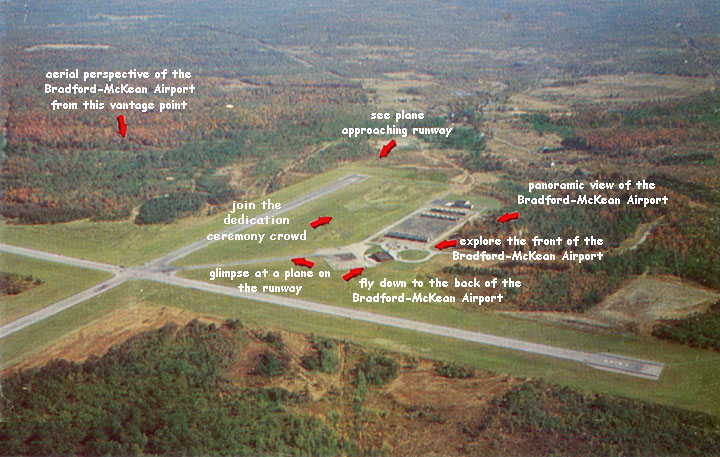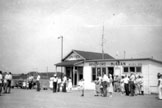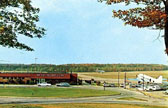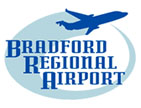Flight Service Station
September 1972 Airport Story Book
booklet credit: Bradford Landmark Society
As a source for the latest information on flying conditions, navigational
aid and flight planning, the Federal Aviation Administration's Flight Service
Station at Bradford Regional Airport is a key factor in flying safety for
pilots landing at or taking off from the airport or flying within the station's
radio range.
Using an array of sophisticated equipment and a communications system which
constantly updates weather information, a team of eight experts provide
pilots any hour of the day with such services as:
Pre-flight briefing. This includes such information as current weather conditions,
weather forecasts, frontal activity, wind aloft forecasts, advisories of
potentially hazardous weather, reports of actual weather conditions reported
by pilots flying in the area in question (PIREPS), operational status of
navigational aids along the predicted route of flight, and conditions at
the airport of destination.
Flight planning. Pilots may receive assistance in plotting courses, determining
mileages. Headings, radio frequencies and landmarks in route are supplied.
In flight assistance. Pilots in the air receive via air/ground channels
weather reports or full pilot briefings, register changes or cancellations
in flight plans.
Airport advisories. Before taking off or landing pilots may call Bradford
Radio and receive wind direction and velocity, favored runway or runway
in use, traffic information and unusual field conditions if they exist.
Direction finding, An automatic direction finder installed in 1967 operates
at a range of 40 nautical miles at 4,000 ft. Its range increases with elevation.
Instrument controlled landing for properly equipped aircraft.
The air service station resources invaluable in routine situations are even
more important to pilots in emergency situations.
Recent statistics show the frequency with which the flight service station
is called upon to render its services. In 1971 the station made 22,255 contacts
with pilots, issued 16,437 advisories and 33,941 pilot briefings and were
involved in the filing of 10,478 flight plans. |




